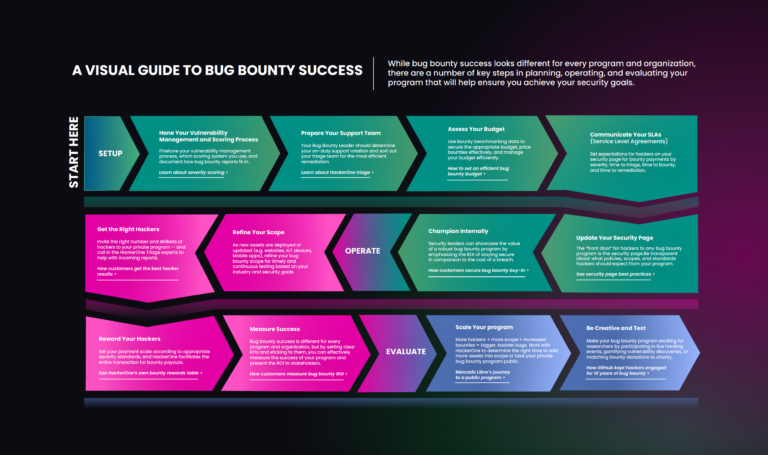In the current digital landscape, understanding and mitigating security risks is more important than ever. Vulnerability scanning is a critical process for identifying weaknesses in systems before they can be exploited.
This article examines two powerful tools—Nmap and Nikto—that can assist in effectively scanning for vulnerabilities. It provides an overview of utilizing Nmap scripts, offers insights into Nikto, and outlines best practices to enhance scanning efforts.
Furthermore, the article guides readers in interpreting scan results to prioritize vulnerabilities appropriately. This comprehensive exploration aims to navigate the essential steps required to strengthen an organization’s security posture.
What is Vulnerability Scanning?
Table of Contents
- 1 Using Nmap for Vulnerability Scanning
- 2 Using Nikto for Vulnerability Scanning
- 3 Best Practices for Effective Vulnerability Scanning
- 4 Interpreting and Addressing Vulnerability Scan Results
- 5 Frequently Asked Questions
- 5.1 What is vulnerability scanning with Nmap scripts and Nikto?
- 5.2 How does Nmap script scanning work?
- 5.3 What is Nikto and how does it complement Nmap?
- 5.4 Can Nmap and Nikto be used together for vulnerability scanning?
- 5.5 Are there any risks associated with vulnerability scanning with Nmap scripts and Nikto?
- 5.6 What should I do with the results of a vulnerability scan using Nmap scripts and Nikto?
Vulnerability scanning is a proactive cybersecurity procedure that entails the identification and assessment of security weaknesses within computer systems, networks, and applications. Utilizing automated tools and scripts, organizations can uncover vulnerabilities that may be exploited by cyber threats, thereby enhancing their overall security posture.
This process is essential for ensuring compliance with industry standards and regulations while effectively managing the risks associated with software vulnerabilities.
Vulnerability scanning is a critical component of a comprehensive security strategy, as it enables organizations to identify specific areas of concern before they can be breached by unauthorized users. By addressing the identified issues in a timely manner, organizations can mitigate potential damages and strengthen their defenses against evolving cyber threats.
The types of vulnerabilities detected can vary widely, ranging from outdated software and misconfigurations to critical security flaws in web applications or network services. A thorough understanding of these vulnerabilities facilitates targeted risk management, allowing organizations to prioritize their remediation efforts based on the severity and exploitability of each weakness, ultimately fostering a more resilient cybersecurity environment.
Using Nmap for Vulnerability Scanning
Nmap, which stands for Network Mapper, is a robust open-source tool extensively used for conducting vulnerability assessments.
It is particularly effective in network mapping, enabling security professionals to identify active devices, discover services, and evaluate their security configurations.
With its comprehensive capabilities and flexibility, Nmap allows users to specify targets, employ various scanning techniques, and obtain valuable insights into the security posture of their network infrastructure.
Overview of Nmap Scripts
Nmap scripts, commonly referred to as Nmap Scripting Engine (NSE) scripts, are sophisticated extensions that enhance the capabilities of the tool for vulnerability detection and network security assessments. By utilizing a broad array of default scripts, users can automate various tasks associated with scanning results, service detection, and even the exploitation of vulnerabilities in target systems.
NSE scripts are essential for performing comprehensive scans that yield valuable insights into security weaknesses.
These scripts are categorized into several distinct types, including discovery, exploitation, and security, each tailored to address specific elements of vulnerability scanning. For example, discovery scripts facilitate the identification of open ports and services, while exploitation scripts are designed to simulate attacks to evaluate system defenses.
By systematically implementing these diverse categories, users can refine their scanning processes, resulting in more precise and actionable outcomes. The integration of scripts significantly decreases the time required for manual analyses and enhances the overall efficiency of vulnerability detection efforts. This improvement enables security professionals to concentrate on prioritizing and remediating the most critical vulnerabilities.
How to Use Nmap Scripts for Vulnerability Scanning
To utilize Nmap scripts effectively for vulnerability scanning, users should execute commands in the command line that leverage various scanning options specifically tailored for distinct targets and vulnerabilities.
By employing specialized scripts, individuals can perform comprehensive assessments that address specific needs, such as identifying outdated software or misconfigurations. For instance, the http-vuln-cve2014-3704 script is designed to detect vulnerabilities associated with Drupal. Users can initiate these scripts by appending them to the basic Nmap command, while also defining the target IP addresses or hostnames.
It is also crucial to configure options such as timing templates to achieve an optimal balance between speed and performance. This approach helps to minimize the risk of detection by security systems, while still providing detailed insights into potential weaknesses and their exploitability across various services.
Using Nikto for Vulnerability Scanning
Nikto is an open-source web server scanner specifically developed to conduct thorough vulnerability scanning and assessment of web applications and servers.
This tool examines various aspects of the server’s configuration, identifies known vulnerabilities, and evaluates web administration settings to enhance the security of web applications.
By offering detailed scanning options, Nikto assists security professionals in detecting vulnerabilities and improving the overall security posture of web infrastructure.
Overview of Nikto
Nikto is a highly regarded tool in the field of cybersecurity, specifically designed for scanning web servers to identify vulnerabilities and misconfigurations. It offers a comprehensive database of known vulnerabilities, enabling users to obtain detailed scanning results that pinpoint security weaknesses within their web applications. Given its focus on web server security, Nikto plays an essential role in conducting vulnerability assessments.
What distinguishes Nikto from other tools is its capacity to perform thorough checks against over 6,700 potential issues, including outdated server software, configuration weaknesses, and security headers. This functionality makes it an invaluable resource for security professionals seeking to identify potential entry points for attackers.
For example, Nikto can detect vulnerabilities such as cross-site scripting (XSS) flaws and SQL injection risks, which are frequently targeted for exploitation. By utilizing these findings, organizations can implement necessary mitigations and enhance their overall security posture, thereby ensuring a robust defense against cyber threats.
In comparison to other scanning tools, Nikto’s extensive plugin architecture and regular updates provide users with a reliable means of staying ahead of emerging vulnerabilities.
How to Use Nikto for Vulnerability Scanning
To utilize Nikto for vulnerability scanning, users must first install the tool using the appropriate installation command. Following installation, the command line can be employed to initiate scans against target web servers.
By specifying user credentials and desired scanning parameters, users can effectively identify vulnerabilities and evaluate the security of their web applications.
Once installed, Nikto offers various command options that can be customized to meet specific scanning requirements. For instance, a user may execute a command such as nikto -h http://targetwebsite.com to perform a basic scan.
For a more comprehensive security assessment, it is advisable to use parameters such as -u to include user credentials, thereby simulating authenticated user scenarios. This approach can uncover potential vulnerabilities that may only be accessible to logged-in users.
By enhancing the detection of vulnerabilities in this manner, users can gain insights into how an attacker might exploit specific weaknesses in a real-world context.
Best Practices for Effective Vulnerability Scanning
Implementing best practices for effective vulnerability scanning is critical for improving the security posture of any organization. These practices facilitate the execution of comprehensive scans that not only identify vulnerabilities but also prioritize them for remediation.
Important considerations include selecting suitable tools, establishing clear scanning methodologies, and regularly updating scanning processes to remain proactive against emerging cyber threats.
Tips for Maximizing Results
To maximize the effectiveness of vulnerability scanning, organizations should implement a multifaceted approach, which includes optimizing scanning options and ensuring the accurate configuration of user accounts. Tailoring scans to specific environments and consistently analyzing the scanning results can facilitate the detection of a broader range of vulnerabilities, thereby enhancing the overall security strategy.
It is imperative to increase the frequency of scans, especially in dynamic IT ecosystems where new assets are routinely added or modified. Organizations that establish a regular scanning schedule will be better positioned to identify vulnerabilities before they can be exploited.
Training team members to accurately interpret the results is essential; a thorough understanding of the context and risk assessment of identified vulnerabilities enables informed prioritization of remediation efforts.
By combining these strategies, organizations can create a robust defense mechanism against potential threats and ensure that their security posture remains resilient over time.
Interpreting and Addressing Vulnerability Scan Results
Interpreting and addressing vulnerability scan results constitutes a vital component of the vulnerability management process, incorporating the use of penetration testing tools like Nmap scripts, Nikto, and Metasploit to detect software vulnerabilities.
A thorough understanding of the identified vulnerabilities, including those related to user accounts and server information, and their potential impact on the organization’s security posture allows security teams to prioritize remediation efforts effectively, enhancing their risk management strategies.
This method ensures that resources are allocated efficiently, addressing the most significant risks first, maintaining an optimal security environment, and leveraging comprehensive scans and vulnerability assessment tools for network discovery.
Understanding and Prioritizing Vulnerabilities
Understanding and prioritizing vulnerabilities identified during scans is essential for effective risk management and security assessments. By analyzing the severity of each vulnerability and its potential impact on the organization, security professionals can develop a prioritized list that systematically guides remediation efforts.
This process typically involves categorizing vulnerabilities using established frameworks, such as the Common Vulnerability Scoring System (CVSS), which provides severity ratings that reflect the potential consequences of exploitation. Organizations should evaluate vulnerabilities not only in terms of their technical characteristics but also by considering factors such as the likelihood of occurrence and the criticality of the affected assets.
By systematically assessing these elements, practitioners can allocate their resources more effectively, addressing the most critical risks first. This approach ultimately enhances the organization’s security posture and minimizes the likelihood of successful attacks.
Frequently Asked Questions
What is vulnerability scanning with Nmap scripts and Nikto?
Vulnerability scanning with Nmap scripts and Nikto is a process of using specialized software programs, such as Nmap and Nikto, to scan computer systems or networks for potential security vulnerabilities. These vulnerabilities could be exploited by hackers to gain unauthorized access to sensitive information or disrupt system operations.
How does Nmap script scanning work?
Nmap script scanning is a feature of Nmap that allows users to run pre-written scripts to automate the process of vulnerability scanning. These scripts are written in the Nmap Scripting Engine (NSE) language and can be used to scan for a wide range of known vulnerabilities and misconfigurations.
What is Nikto and how does it complement Nmap?
Nikto is an open source web server scanner that specializes in scanning for vulnerabilities in web applications. Unlike Nmap, which is a general-purpose network scanner, Nikto is specifically designed for web vulnerability scanning and can provide more detailed information about potential vulnerabilities in web servers.
Can Nmap and Nikto be used together for vulnerability scanning?
Yes, Nmap and Nikto can be used together to complement each other’s scanning capabilities. Nmap can be used to scan for vulnerabilities in network services, while Nikto can be used to scan for vulnerabilities in web applications. Combining the results from both tools can provide a more comprehensive view of the overall security posture of a system or network.
Are there any risks associated with vulnerability scanning with Nmap scripts and Nikto?
Yes, there are some risks associated with vulnerability scanning with Nmap scripts and Nikto. These include accidentally crashing a system or network, disrupting network traffic, or triggering security alarms. It is important to use these tools responsibly and with proper authorization to avoid any potential risks.
What should I do with the results of a vulnerability scan using Nmap scripts and Nikto?
The results of a vulnerability scan using Nmap scripts and Nikto should be carefully reviewed and analyzed to identify any potential vulnerabilities or weaknesses in the system or network. It is important to prioritize and address these vulnerabilities in a timely manner to prevent them from being exploited by malicious actors.




